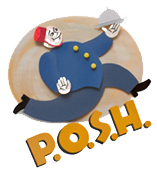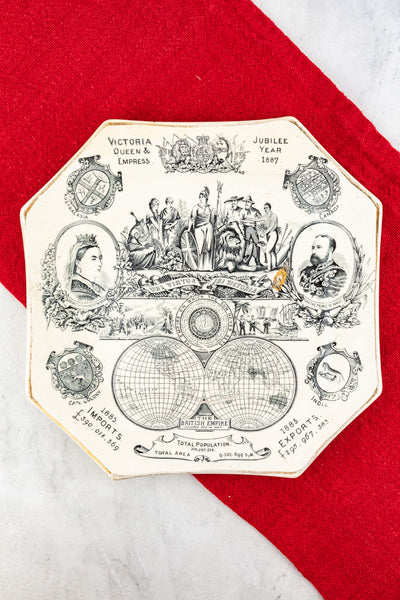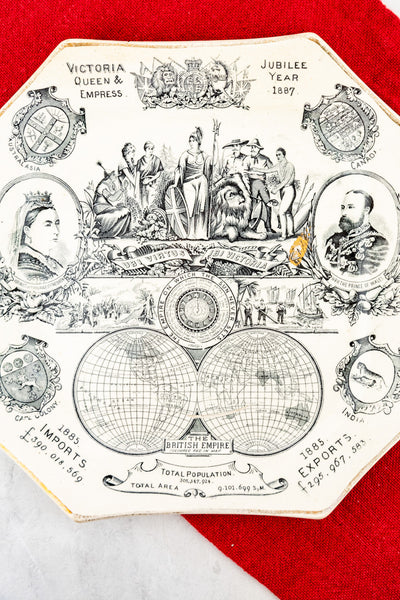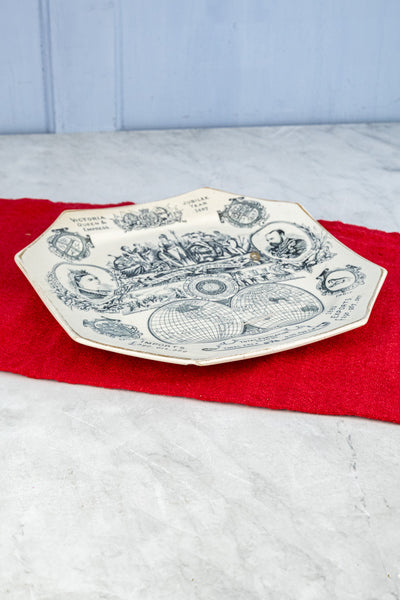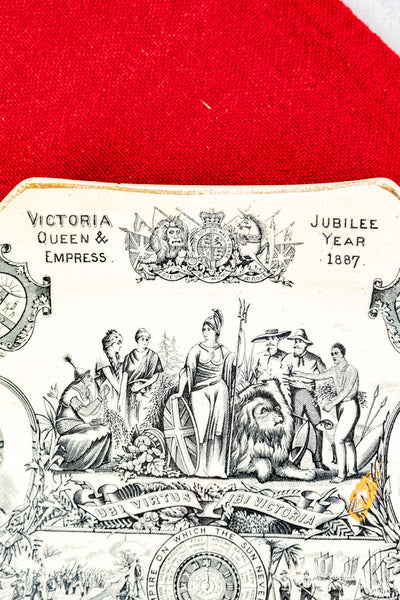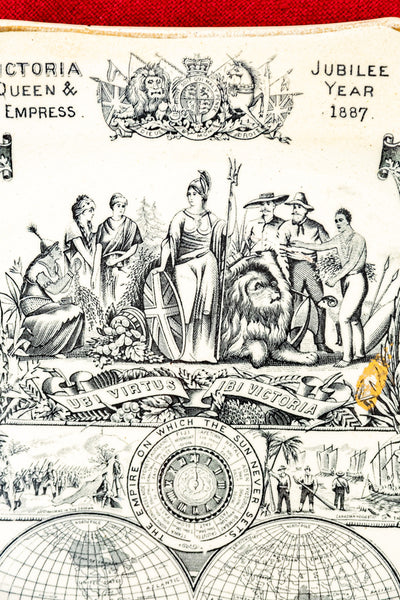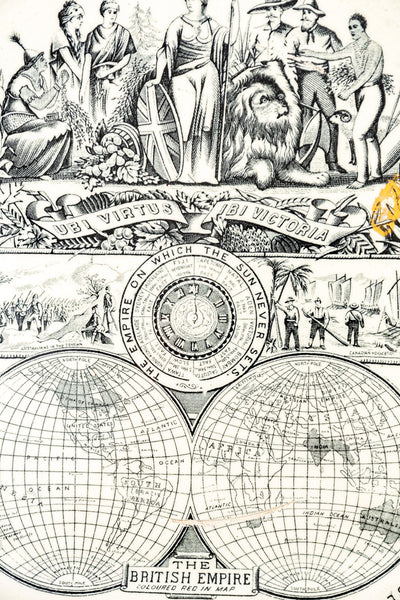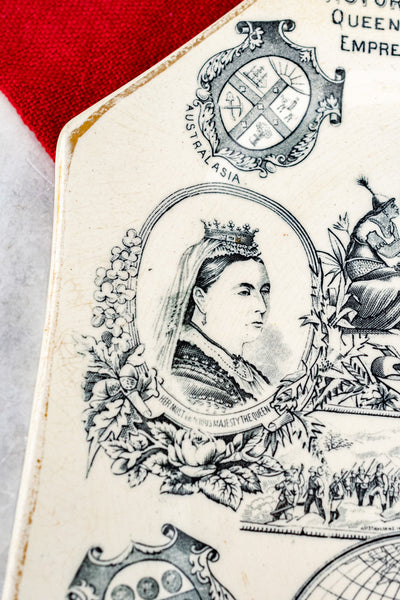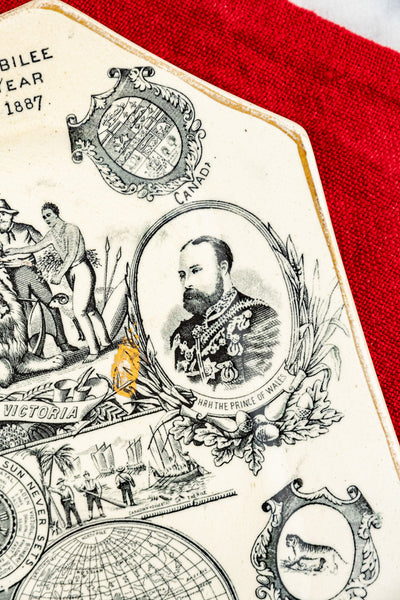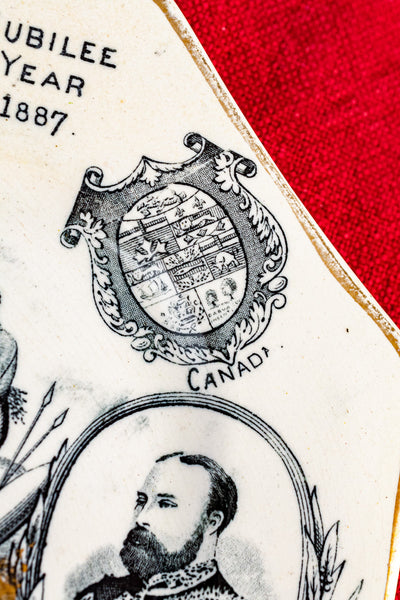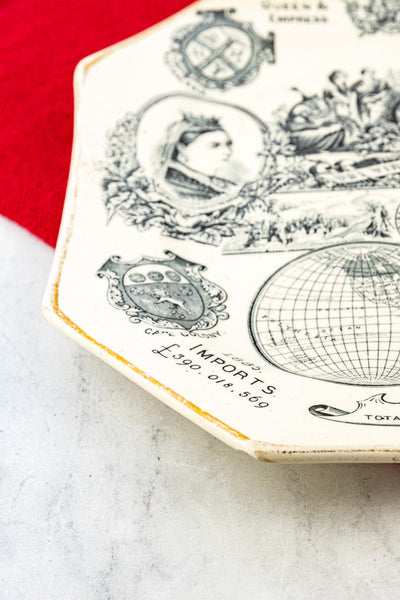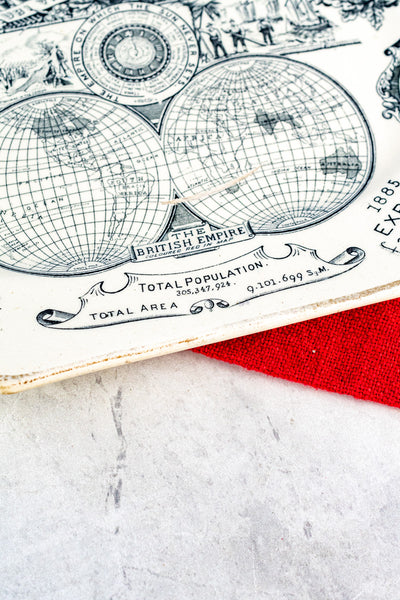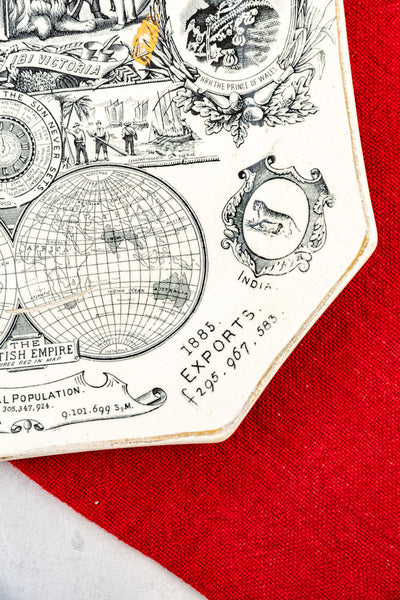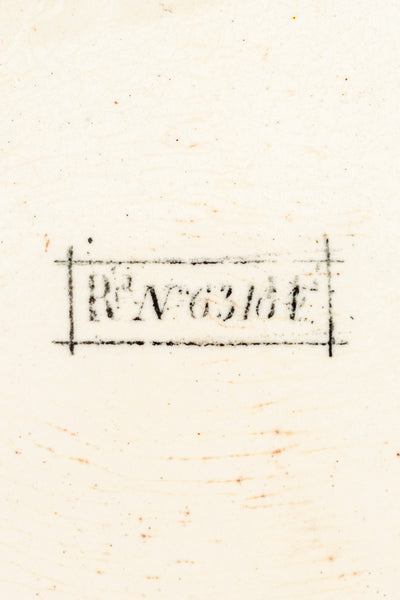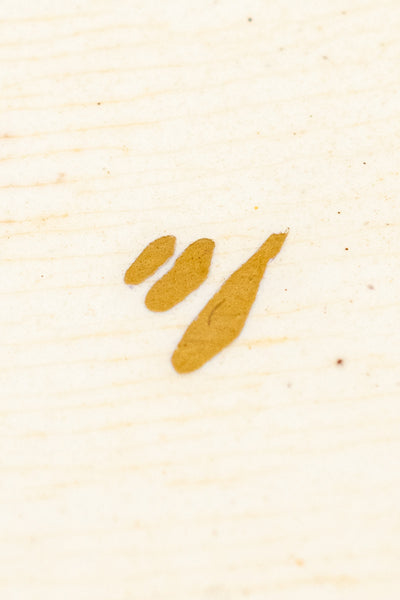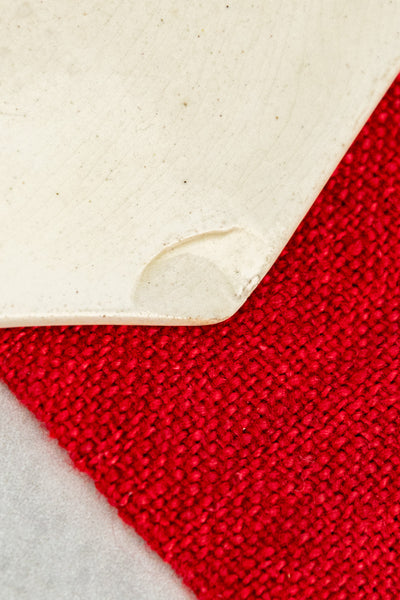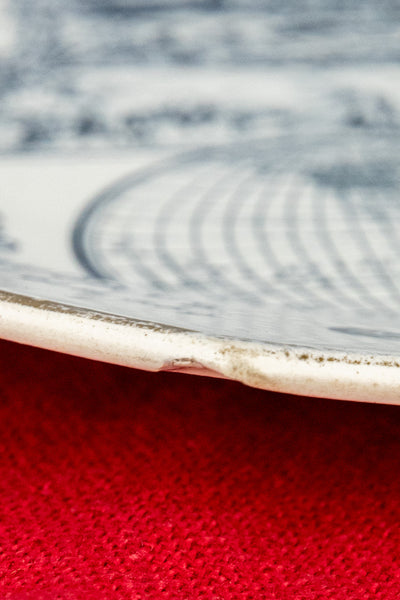Antique Queen Victoria 1887 Golden Jubilee Plate
Antique Queen Victoria 1887 Golden Jubilee Plate
$125.00
Produced more than 135 years ago to commemorate the Jubilee of Queen Victoria in 1887, this Antique Golden Jubilee Plate is brimming with British national pride.
From noted earthenware potter Wallis Gimson & Co. producing at Lane Delf in Fenton, Stoke-on-Trent, this bold transferware octagonal plate has been accented with a touch of gilt. Although in business for a mere eight years, Gimson left a lasting legacy on the commemoration and souvenir trade through its production of distinctive and highly collectible themed design series including The World and Achievements of Notable Victorians.
Covered with portraits, symbolic imagery and economic facts, this fascinating plate captures a snapshot of the British Empire in the mid-1880s. Distinctive renderings of Queen Victoria and her successor, The Prince of Wales, face one another from opposite sides, separated by an allegorical tableau of Britannia including an overflowing cornucopia and the great lion. Below this central scene, the phrase Ubi Virtus, Ibi Victoria, (Where there is strength, there is victory; a clever play on Victoria's name) cascades directly above two hemispheric globes depicting the extensive empire. Completing the nationalistic message, a highly detailed clock face is surrounded by declaration:
The Empire on Which the Sun Never Sets
The uppermost portion of the plate pays tribute to the Sovereign with a regal graphic incorporating a coat shield, crown, lion, unicorn and Jubilee Year:
With a registration mark dating to December 6, 1886, providing ample time for production and sales in anticipation of the upcoming Jubilee Year of 1887, the featured productivity statistics would have been a source of pride to the aristocracy and everyday Britons alike. Included along the lower edges of the plate:
Strictly one-of-a-kind and subject to prior sale. In very good original antique condition with crazing as shown in the alternate images. 9.75" in diameter at widest points.
Learn More About Queen Victoria
Queen Victoria was the monarch of the United Kingdom of Great Britain and Ireland from June 20, 1837 until her death on January 22, 1901. From May 1, 1876, she used the additional title of Empress of India.
Victoria was born on May 24, 1819 and was the daughter of Prince Edward, the fourth son of King George III. In a twist of fate, both her father and the King died in 1820, and Victoria was raised under close supervision by her very strict German-born mother Princess Victoria of Saxe-Coburg-Saalfeld. On June 20, 1837, Victoria's uncle King William IV died at the age of 71, and at the very young age of 18, Victoria became Queen. In her diary she wrote, "I was awoke at 6 o'clock by Mamma, who told me the Archbishop of Canterbury and Lord Conyngham were here and wished to see me. I got out of bed and went into my sitting-room (only in my dressing gown) and alone, and saw them. Lord Conyngham then acquainted me that my poor Uncle, the King, was no more, and had expired at 12 minutes past 2 this morning, and consequently that I am Queen."
The United Kingdom was already an established constitutional monarchy, in which the Sovereign held relatively few direct political powers. Privately, Victoria attempted to influence government policy and ministerial appointments. Publicly, she became a national icon, and was identified with strict standards of personal morality.
Victoria married her first cousin, Prince Albert of Saxe-Coburg and Gotha, in 1840. By all accounts a happy union, their nine children married into royal and noble families across the continent, tying them together and earning Victoria the nickname "the grandmother of Europe".
After Albert's early death in 1861, Victoria plunged into deep mourning for the remainder of her life, choosing to wear black and having a special crown fashioned that would allow her widow's cap (head veil) to remain in place for royal engagements.
The anniversary years of her reign, were times of joyous public celebration. On September 23, 1896 Queen Victoria surpassed her grandfather King George III as the longest-reigning British monarch, an event she marked privately at Balmoral Castle. Writing in her journal, she reflected "People wished to make all sorts of demonstrations, which I asked them not to do until I had completed the sixty years next June." The Diamond Jubilee became a historic opportunity to celebrate Victoria's status as longest-reigning monarch, in addition to marking 60 years on the throne.
On the anniversary date of her accession, 78 year-old Victoria once again reflected in her journal: "This eventful day, 1897 has opened, and I pray God to help and protect me as He has hitherto done these sixty long eventful years! I feel sad at the new losses I have sustained... God will surely help me on! How well I remember this day sixty years ago when I was called from my bed by dear Mama to receive the news of my accession!"
Until the record-setting service of Elizabeth II, Queen Victoria's reign of 63 years and seven months was the longest of any other British monarch and the longest of any female monarch in history. Still referred to today as the Victorian era, it was a period of vast industrial, cultural, political, scientific, and military change within the United Kingdom.
Learn More about Coronation Memorabilia
As a means to commemorate historic events - including coronations; silver, golden and diamond jubilees; royal weddings and royal visits to distant lands - artisans and craftspeople were commissioned to create beautiful pieces of memorabilia. Highly collectable, they are much more than mementos of an event long past. They are lovely pieces created to capture the spirit of their time as much as they capture our imaginations today.
